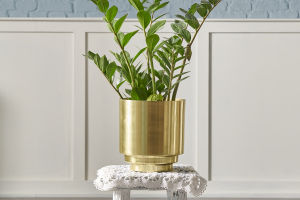Wooden cabinets add warmth and elegance to any space, but they are also susceptible to mold growth if not properly maintained.
Mold not only damages the appearance of cabinets but also poses health risks to occupants.
However, with the right knowledge and preventive measures, you can keep your wooden cabinets mold-free and looking their best.
Understanding Mold Formation
Mold thrives in environments with high humidity and poor ventilation, making kitchens and bathrooms prime locations for mold growth, especially on wooden surfaces like cabinets. Mold spores are everywhere, and when they find a suitable environment, they quickly multiply, forming visible patches of mold.
Preventive Measures
1. Control Humidity
The key to preventing mold growth on wooden cabinets is to control humidity levels. Invest in a hygrometer to monitor humidity levels in your home. Ideally, indoor humidity should be kept between 30% and 50%. Use a dehumidifier or air conditioner to regulate humidity levels, especially in areas prone to moisture buildup.
2. Promote Ventilation
Proper ventilation is essential for preventing mold growth. Ensure that your kitchen and bathroom are adequately ventilated with exhaust fans. Additionally, leave cabinet doors open periodically to allow air circulation, especially after cooking or showering.
3. Use Mold-Resistant Paint or Finish
When installing or refinishing wooden cabinets, opt for mold-resistant paint or finish. These products contain additives that inhibit mold growth, providing an extra layer of protection against mold formation.
4. Regular Cleaning
Regular cleaning is crucial for keeping wooden cabinets mold-free. Use a mild detergent and water solution to clean the surfaces of your cabinets regularly. Pay special attention to areas prone to moisture buildup, such as around sinks and near appliances.
5. Monitor Plumbing
Leaky pipes and faucets can contribute to moisture buildup, creating an ideal environment for mold growth. Inspect your plumbing regularly for any signs of leaks and repair them promptly to prevent water damage to your cabinets.
Removing Mold from Wooden Cabinets
Despite taking preventive measures, mold can still occasionally appear on wooden cabinets. Here's how to safely remove mold from your cabinets:
1. Protect Yourself
Before tackling mold removal, protect yourself by wearing gloves, a mask, and safety goggles to avoid direct contact with mold spores.
2. Isolate the Area
To prevent mold spores from spreading to other areas of your home, isolate the affected cabinets by sealing off the surrounding area with plastic sheeting and tape.
3. Prepare a Cleaning Solution
Mix equal parts white vinegar and water or use a commercial mold cleaner according to the manufacturer's instructions. Both vinegar and commercial cleaners are effective at killing mold spores.
4. Apply the Cleaning Solution
Use a sponge or cloth to apply the cleaning solution to the moldy areas of the cabinets. Allow the solution to sit for 10-15 minutes to penetrate and kill the mold.
5. Scrub the Surface
After allowing the cleaning solution to sit, scrub the moldy areas of the cabinets with a brush or sponge to remove the mold. For stubborn mold growth, you may need to repeat the cleaning process multiple times.
6. Rinse and Dry
Once the mold has been removed, rinse the cabinets thoroughly with clean water to remove any residual cleaning solution. Use a clean, dry cloth to wipe the cabinets dry.
7. Apply a Mold Inhibitor
After cleaning and drying the cabinets, apply a mold inhibitor to prevent future mold growth. Mold inhibitors are available in spray or liquid form and can be applied to the surface of the cabinets according to the manufacturer's instructions.
By following these preventive measures and proper cleaning techniques, you can keep your wooden cabinets mold-free and prolong their lifespan. Regular maintenance and vigilance are key to preserving the beauty and functionality of your cabinets for years to come.


